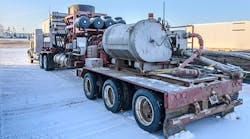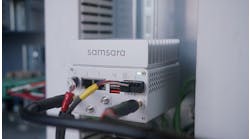Industrial machine builders, OEMs and equipment distributors, are acutely aware of the importance of digitizing their businesses. According to Deloitte, the average operating margin from the aftermarket business globally is about 2.5X the operating margin from new equipment sales. Digital aftermarket services offer differentiation in a competitive market and can also reduce equipment downtime and maintenance costs, improve servicing and job costing, and open new recurring revenue streams.
With so many options for buying or building, it’s important to establish a strict set of criteria for evaluating technology. Here, we break down some of the criteria companies should consider when selecting technology—from hardware to software—on which to base new digital service offerings.
Consider hardware functionality
Hardware is the first step to gathering data from equipment. At the core, hardware should be able to connect to your equipment, gather data, and send it to a central location for management and visibility. To evaluate hardware functionality, start with the basics of connecting to your equipment. Look for support for the most common industrial protocols or the ones specific to your operation so that deployment and integration are seamless. In order to stream data directly to a central location, the hardware should come with pre-provisioned cellular service built in. This will eliminate the hassle and cost of managing separate cell service contracts.
Evaluate cloud vs. on-premises options
On-premises options may have been the default in the past, but they come with a myriad of complications and costs related to IT infrastructure. Using cloud-based software can help satisfy important foundational features, like data management, without having to worry about IT expenses. Look for solutions that include unlimited data storage, offer data granularity down to one-second resolution, are available to an unlimited number of users, and are optimized for mobile use. Going with a cloud-based platform can eliminate the need for in-house IT expertise and separate server expenses. Plus, cloud-based software is easily kept up to date with new features and enhancements.
Dive into software application specifics
Look into dashboard, reporting, and alerting functionality.
- Dashboards should give you the flexibility to create what you need for your own customers without needing engineering experience to do so. They should be easy for any technician to create, with a user-friendly interface and the ability to edit whenever needed. Dashboards should also be customizable for your business, so should offer important visuals for equipment like compressors, turbines, condensers, motors, generators, heat exchangers, coolers, fans, and more. Look for the ability to create custom metrics or KPIs that can be visualized in various ways, like trend lines and graphs.
- Reporting should scale across your customers and customer locations so they have broad visibility, can track performance, and maintain compliance. You should be able to pull data down to one second into a detailed report, or look at aggregate equipment metrics for the week. Look for reports that you can schedule and deliver to customers with your own branding and ‘reply to’ email address. This ensures that customers will reach out to you if they have questions and not the solution vendor. It also minimizes confusion, saves time, and improves your customer’s overall experience.
- Alarm notifications should give you the ability to resolve issues in real-time, take preventative action, reduce maintenance costs, and improve customer service. Look for solutions that offer out-of-the-box voice, text, and email alert options. It should be easy to snooze, acknowledge, and take action on an alarm directly from any smartphone or laptop. You should be able to audit past alarms with a log that gives you visibility into equipment performance and operator response.
Look at pricing dimensions and options for support
In order to establish a scalable new business offering, you’ll need to consider pricing dimensions for each solution. Simple and scalable pricing models offer a simple annual license fee that includes all functionality plus 24/7 support. Avoiding complicated pricing dimensions that center on per-seat licenses or servers could save you in the future when you need to scale operations.
Consider the advantages of a consolidated platform
A platform that combines all of the features and functionality listed above into one solution may help you bring digital services to market faster and with less resources than if you were to evaluate and integrate multiple technologies. Consider the bandwidth you have for running multiple pilots and the internal technical knowledge you’d need for systems integration.
At Samsara, we provide a consolidated platform for equipment monitoring that is feature rich for OEM and equipment customers. To learn more about the solution we provide or to start a free trial, contact us here.



